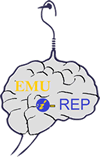- DSpace Home
- →
- 07 Faculty of Architecture
- →
- Books – Architecture
- →
- View Item
JavaScript is disabled for your browser. Some features of this site may not work without it.
The Famagusta Ecocity: A New Path for Peace in Cyprus
Markides, Emily; Boğaç, Ceren; Kelly, Roger; Markides, Vasia; Elia, Christina; Mullen, Fiona; Haffar, Warren; Hançer, Polat; Garma-Fernandez, Armando; Wampler, Jan; Christodoulou, Nektarios; Rossetou, Zoi
Date:
2019
Abstract:
There was a children’s toy that was molten in the presence of silence and desolation. Breakfast tables were set for the trapped souls of the 45-year-human-free section of the city. Another morning flashed by divided by barbed wires. Yet, people on the other side of the border, went about their everyday activities, eating, talking, sleeping and getting older…
A fragmented city, fragmented lives within a fragmented country! What would you choose: To watch idly from a distance, to wait for an ex machine Deus to intervene, or to take action?
This book is dedicated to those who chose to take action for a better life for all. It traces a road map not travelled by many along ecological paths that connect rather than segregate offering splendid vistas and bold visions to its readers. It is a book written by a group of people whose roots are intertwined yet, they only learned about the patterns of their lives incidentally. It is a guide for an ecopolis that does not stand far away.
The book presents eco-friendly peace practices, which may relieve the wounds of the city of Famagusta so that it can be entrusted as a healed and wholesome ecocity to future generations. There are many aspects of sustainable life that cannot be discussed without touching upon all others. However, it is impossible to cover every aspect of sustainability within a single book even though this book has tried to cover as extensive a ground as possible.
Therefore, this book offers a selection of thoughts, scientific statements, examples and design ideas regarding how an integrated Famagusta will promote peaceful coexistence among
all its inhabitants, embrace the latest sustainable and renewable technologies and attract high-quality, job-creating, commerce, tourism and investment. The book is organized in four parts:
In Part One, “The Place, its People and their Ordeals” three women are introduced. In Chapter one, Emily Markides shares her journey very much focused upon an ecocity vision for an integrated and peaceful Famagusta. Emily had to leave her hometown to become a refugee in 1974. In Chapter two, Ceren Boğaç who was born in Famagusta after 1974 and raised in a dwelling over-looking the abandoned district of the city, shares her experience of living an entire life with that memorial burden. In Chapter three, Vasia Markides talks about the Famagusta Ecocity Project and how the roads of these three women are intertwined along with the lives of so many others.
Part Two addresses “Time and Opportunities” offered by the ecocity team members. In Chapter four, Christina Elia asks what kind of a city we want to live in today by stressing contemporary urban problems. In Chapter five, Fiona Mullen, analyses the sustainable
opportunities for businesses and foreign investment for the sake of a better environment.
In Part Three, “Urban, Ecological Sustainability and its Challenges” are being discussed. In Chapter six, Roger Kelly reviews the consequences of climate change and its particular impact on Cyprus and Famagusta. In Chapter seven, Warren Haffar discusses the implications of a sustainable development model with a specific focus on peace-building processes and on conflict transformation.
In Chapter eight, Ceren Boğaç and Polat Hançer identify eco-friendly building applications by stressing the reciprocal relationship between eco architecture and an ecocity framework. In Chapter nine, Armando Garma-Fernandez addresses the best, currently existent architectural applications of energy efficient, sustainable buildings.
In Part Four, “Design Proposals and Responses” are being introduced. In Chapter ten, Jan Wampler presents the Cyprus architectural design studio process and proposals of the Famagusta Ecocity Project. In Chapter eleven, Nektarios Christodoulou and Zoi Rossetou conclude on the beneficial influence of the project on the current status of ethnic relations in Cyprus and address responses and experiences of the bi-communal participants of the Cyprus architectural design studio.
Description:
Book of The Famagusta Ecocity: A New Path for Peace in Cyprus
Files in this item
This item appears in the following Collection(s)
Search EMU I-Rep
Browse
-
All of DSpace
-
This Collection
My Account
Statistics
Eastern Mediterranean University, Özay Oral Library, Famagusta, North Cyprus via Mersin 10 TURKEY
If you find any errors in content, please contact osman.soykan@emu.edu.tr
If you find any errors in content, please contact osman.soykan@emu.edu.tr

EMU I-Rep by Eastern Mediterranean University Institutional Repository is licensed under a Creative Commons Attribution-Gayriticari-NoDerivs 3.0 Unported License
DSpace software copyright © 2002-2011 Duraspace








